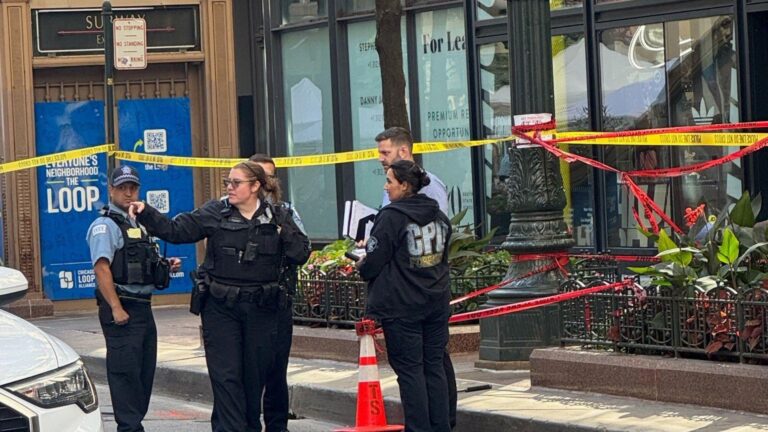Critical Stabbing Incident Near Chicago’s 606 Trail Sparks Safety Alarm
A 33-year-old male victim is currently in critical condition after being stabbed near the renowned 606 trail, an elevated greenway and recreational path in Chicago’s Bucktown district. Emergency responders arrived at the scene shortly after 10:30 PM on Saturday, discovering the man with severe injuries. He was swiftly transported to a nearby trauma center where he is receiving intensive medical care for life-threatening wounds.
Law enforcement officials have launched a thorough investigation, canvassing the vicinity and gathering eyewitness accounts. No arrests have been made to date, and the motive behind the attack remains undetermined. Police are appealing to the public for any information that could assist in identifying suspects. Residents in the area have voiced growing unease about the rise in violent incidents near the trail, calling for enhanced security measures to protect community members.
- Incident Date & Time: Saturday, approximately 10:30 PM
- Location: Vicinity of The 606 trail, Bucktown neighborhood
- Victim Profile: Male, 33 years old, critically injured
- Current Status: Investigation active, no suspects detained
| Agency | Function | Current Status |
|---|---|---|
| Chicago Police Department | Ongoing Investigation & Area Surveillance | Active |
| Chicago Fire Department | Emergency Medical Response & Patient Transport | Completed |
| Neighborhood Watch Groups | Witness Coordination & Community Support | Ongoing |
Addressing the Rise in Violent Crimes Around the 606 Trail
In light of the stabbing near the 606 trail, Chicago authorities are intensifying their crackdown on the recent surge in violent offenses throughout the city. The Chicago Police Department has identified a pattern of increased street violence, notably in neighborhoods adjacent to popular public spaces like the 606. To combat this, specialized task forces have been deployed, and patrol frequency has been ramped up in hotspots.
Key contributing factors to this uptick include:
- Heightened gang-related confrontations escalating street-level violence.
- Insufficient lighting and limited surveillance infrastructure in public corridors such as the 606 trail.
- Resource limitations within law enforcement agencies hindering proactive crime deterrence.
| Focus Area | Measures Implemented |
|---|---|
| Enhanced Patrols | Increased deployment of officers in vulnerable zones |
| Community Engagement | Regular dialogues with neighborhood leaders and residents |
| Technological Upgrades | Installation of additional surveillance cameras and improved lighting |
Community Demands for Stronger Security and Increased Patrols
Following the violent episode near the 606 trail, local community advocates are pressing city officials to implement more robust safety protocols. Residents have expressed alarm over the frequency of violent acts and stress the importance of a multifaceted approach that combines heightened law enforcement presence with active community participation.
- Expanded foot and bicycle patrols during high-traffic periods to boost visibility and rapid response.
- Upgraded lighting installations along trails, underpasses, and park areas to deter criminal behavior.
- Deployment of advanced surveillance systems with strategically placed cameras near transit hubs and recreational spaces.
- Community outreach initiatives designed to increase neighborhood watch involvement and public safety education.
Evidence from similar Chicago neighborhoods demonstrates the effectiveness of increased patrols in reducing violent incidents,as shown below:
| Neighborhood | Violent Incidents Before Patrol Increase | Violent Incidents After Patrol Increase | Reduction Percentage |
|---|---|---|---|
| Logan Square | 45 | 28 | 38% |
| Pilsen | 38 | 22 | 42% |
| Uptown | 52 | 31 | 40% |
Expert Advice on Enhancing Safety Along Urban Trails
Safety specialists emphasize that community-driven strategies are vital for reducing crime on urban trails like the 606. They recommend a combination of improved lighting, regular security patrols, and the installation of emergency call stations to foster safer environments. Criminologists highlight that visible security measures not only deter offenders but also reassure trail users.
Key community-based crime prevention tactics include:
- Organizing neighborhood watch groups and volunteer patrols.
- Conducting safety workshops tailored for frequent trail users.
- Promoting mobile applications that enable real-time sharing of safety alerts.
- Facilitating collaboration between law enforcement agencies and urban planners.
| Prevention Strategy | Advantages | Estimated Implementation Timeline |
|---|---|---|
| Upgraded Lighting | Enhances visibility and reduces crime opportunities | 3 to 6 months |
| Emergency Call Boxes | Provides immediate access to law enforcement | 6 to 12 months |
| Community Patrols | Boosts local vigilance and deterrence | Ongoing |
| Safety Education Workshops | Empowers residents with knowledge and preparedness | 1 to 3 months |
Final Thoughts on the 606 Trail Stabbing Investigation
The inquiry into the stabbing near Chicago’s 606 trail continues as authorities actively seek tips from the public to identify those responsible. Law enforcement urges anyone with relevant information to come forward to aid in the pursuit of justice. Meanwhile,community members are encouraged to remain alert and report any suspicious behavior to help maintain safety in the neighborhood.Updates will be shared as new developments arise.





